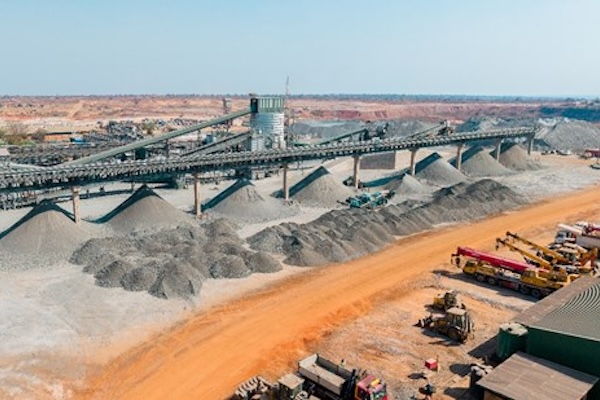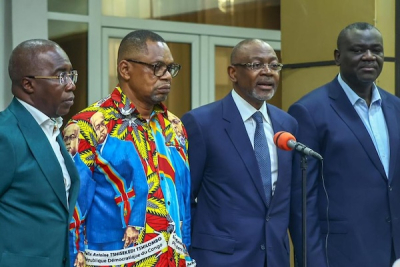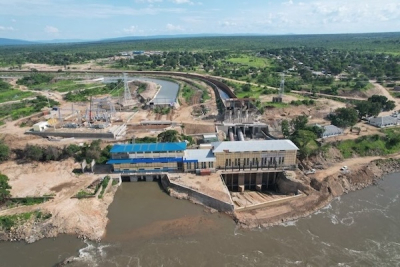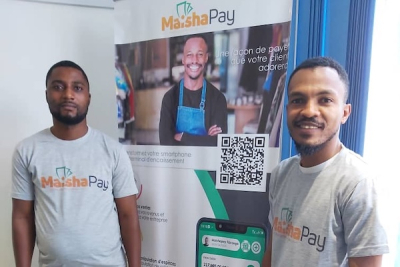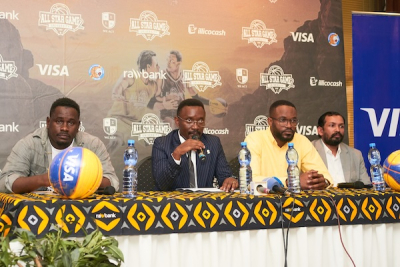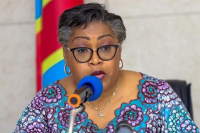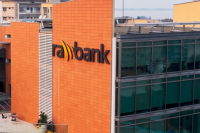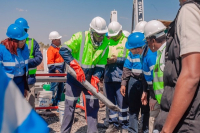
News (571)
Highlights
• DR Congo and Al Mansour Holding Seal 18 agreements totaling $21 billion.
• These investments are part of a $300 billion fund Doha has dedicated to Africa and Asia, handled via Al Mansour Holding.
On 2nd September 2025, Sheikh Al-Mansour Bin Jabor Bin Jassim Al Thani, leader of Al Mansour Holding and cousin of Qatar’s Emir, arrived in Kinshasa. This visit culminated in the signing of 18 agreements with the Democratic Republic of Congo (DR Congo), totaling $21 billion according to the Prime Minister's office.
The signing ceremony was presided over by Deputy Prime Minster and Transportation Minister Jean-Pierre Bemba and attended by Public Health Minister Roger Kamba, Professional Training Minister Marc Ekila and other government members.
The agreements cover 15 sectors: fishing and livestock, agriculture, environment, public health, telecommunications, occupational training, national identity systems, logistics and transportation, water resources and electricity, finance and banking, cybersecurity, security and defense, urban development, mining and refining (copper, cobalt, gold), and hydrocarbons.
Although Sheikh Al-Mansour is acting as a private investor, these partnerships also involve the State of Qatar. As Jeune Afrique reported in August 2025, the $21 billion designated for DR Congo comes from a $300 billion fund that Doha has set aside for Africa and Asia, managed via Al Mansour Holding.
Key projects include the redevelopment of Kinshasa; the construction of Gateway City in Kasumbalesa; the creation of Congo Pharma, a medical equipment and drug manufacturing facility to reduce imports; the construction of 1.5 million affordable houses; the development of industrial units for the treatment and refining of minerals; and the modernisation of airports, including N'Dolo in Kinshasa.
In the oil and gas sector, there are plans to identify and assign strategic plots to Sonahydroc in the Albertine Graben and Central Basin, before a operational partnership with Amoc Oil and Gas, a subsidiary of Al Mansour Holding, is implemented. To secure these investments, preparatory documents also anticipate the deployment of private security companies in sensitive areas, approved by the Congolese Ministry of Defense.
According to Nidal Ammache, adviser to Sheikh Al-Mansour, these 18 memorandums are the result of a year of collaboration. Upon receiving the letter of intent, Prime Minister Judith Suminwa Tuluka praised a "win-win partnership" that demonstrates her government's openness to private investments, seen as a lever for economic diversification, job creation, and sustainable development.
Before Kinshasa, the Sheikh Al-Mansour and the Qatari delegation he led were in Zambia, Zimbabwe, Mozambique, and Botswana. In these countries, they also sealed deals totaling $51 billion.
The tour is set to continue in Tanzania, Gabon, Burundi, Central African Republic, and Angola, with a total portfolio exceeding $100 billion. With its $21 billion, DR Congo is one of the main recipients of these announced investments.
Timothée Manoke, stagiaire
Highlights
• Kipushi zinc mine boosts concentrator capacity by 20% after upgrades.
• Record output in first week points to global top-5 ranking potential.
• Ivanhoe stays cautious, keeping 2025 forecast unchanged at 180,000–240,000 tonnes.
The Kipushi zinc mine in the Democratic Republic of Congo (DRC), operated by Ivanhoe Mines (62%) and state miner Gécamines (38%), has lifted production following the completion of upgrades to its concentrator and density separator (DMS).
The debottlenecking work, designed to resolve operational setbacks encountered in 2024, increased concentrator capacity by 20%, the company said in a statement released on August 27, 2025.
Within a week of restarting operations, Kipushi delivered 5,545 tonnes of zinc in concentrate — a record output equivalent to an annualized rate of 290,000 tonnes. At that pace, the mine could rank as the world’s fourth-largest zinc producer, according to a June 2024 GlobalData survey published by Mining Technology.
Despite the strong start, Ivanhoe has kept its 2025 production forecast at 180,000–240,000 tonnes.
The upgrade follows a challenging 2024, when high iron content in ore from the top of the deposit reduced recovery rates and forced Ivanhoe to lower its forecast from 100,000–140,000 tonnes to 50,000–70,000 tonnes. Actual output was 50,307 tonnes.
To address the issue, Ivanhoe launched a concentrator and DMS upgrade program in September 2024. According to early results, 42,736 tonnes of concentrate were produced in Q1 2025. The company now states that the work has been completed ahead of schedule and under budget, although it had previously informed investors that it expected to spend $25 million this year at Kipushi.
On the sales side, Ivanhoe signed an offtake deal in July with Swiss trader Mercuria for one-third of Kipushi’s output not already committed to CITIC Metal (HK) and Trafigura Asia Trading. Mercuria will also provide a $20 million loan at 6% interest.
Timothée Manoke, intern
A partnership with Monaco-based satellite operator Monacosat will enable the Democratic Republic of Congo to acquire a satellite for an estimated $400 million, the presidency announced after a meeting between President Félix Tshisekedi and Monacosat representative Jean-Philippe Anvam on August 30.
The investment, which amounts to nearly a quarter of the country’s 2025 budget, will be financed by a loan. Anvam stated that "a bank has already mobilized the necessary funds," though he did not name the institution.
The previous day, however, Fidelity Bank CEO Nneka Onyeali-Ikpe met with Minister of Digital Economy Augustin Kibassa and confirmed her bank’s readiness to finance the project. She announced that a joint Fidelity Bank-ministry team would be formed to define the project's parameters.
The initiative follows a memorandum of understanding signed between the Congolese government and Monacosat in November 2024. The project aims to deploy a satellite to reduce the DRC's digital divide and facilitate high-speed internet access across the country, particularly in rural and remote areas with limited telecommunications infrastructure.
The satellite is also intended to enhance cybersecurity, support distance learning, improve telemedicine, and stimulate the growth of the digital economy.
It remains to be seen whether a final agreement has been reached, as its signing is an essential prerequisite for the project to become operational.
Boaz Kabeya
Katamba Mining has filed an application with the Electricity Sector Regulation Authority (ARE) for a production concession for the third phase of the Mpiana-Mwanga hydroelectric plant. The company, 70% owned by China's Zijin Mining and 30% by the DRC Mining company Cominière, aims for a planned capacity of 108 MW for the plant located in the Manono territory.
The move follows Katamba Mining's April launch of a tender to hire a subcontractor to build and operate a crushing plant. This facility is intended to produce the sand and gravel needed for the construction of Mpiana-Mwanga III, which is situated more than 90 kilometers northeast of Manono.
With the addition of the projected 108 MW from the third phase, the Mpiana-Mwanga complex would reach a total capacity of 148 MW. The rehabilitation of the first two phases, completed in 2024 at a cost of $80 million, had already boosted the plant’s capacity to 40 MW, a 30% increase from its original output. These upgrades restored installations that were 97 years old and had been out of service since 1998.
The primary goal of these investments is to power the Manono lithium mining project, considered one of the world's largest high-grade lithium deposits. However, Katamba's distribution concession application and statements from Zijin Mining Vice President James Wang confirm that the electricity generated will also supply local communities and key infrastructure. This includes the city and territory of Manono, the village of Kanuka (Tanganyika), the territory of Malemba Nkulu (Haut-Lomami), and the Manono airfield.
According to its 2024 annual report, Zijin Mining, which holds a mining permit for the northeastern zone of the Manono deposit, has identified approximately 2.62 million tonnes of lithium oxide at an average grade of 1.5% during preliminary exploration. This is equivalent to 6.47 million tonnes of lithium carbonate. The company plans to begin production in the first quarter of 2026.
Timothée Manoke (Intern)
Congolese fintech Maishapay has been selected as one of 12 startups for the fourth edition of Visa’s Africa Fintech Accelerator program. The cohort, running from October to December 2025, includes companies working in areas such as SME digitization, digital lending, cross-border payments, payroll management, B2B payments, AI-driven transactions, social commerce, climate insurance, and neobanking.
By joining the program, Maishapay will gain access to tailored mentorship, specialized training, networking opportunities, and direct links to investors. Since its launch, the accelerator has supported 64 fintechs from 17 African countries, with a combined portfolio value of $1.1 billion. The 12-week program is part of Visa’s $1 billion investment plan in Africa through 2027 to boost financial inclusion and strengthen the continent’s digital economy.
Founded in 2018 by Congolese IT entrepreneur Landry Ngoya, Maishapay is a blockchain-based digital wallet. It allows withdrawals, deposits, mobile payments, money transfers, and offers both checking and savings accounts. Available online and offline, it aims to provide banking alternatives for underserved and unbanked populations.
The platform now counts over 68,000 users, connects with 27 e-commerce sites, and is accepted by more than 14,000 merchants in retail, hospitality, and food services. Already active in the DRC, Congo-Brazzaville, Nigeria, Egypt, and Ethiopia, Maishapay focuses mainly on young entrepreneurs and women who are often excluded from traditional financial services.
Rawbank, the leading banking institution in the Democratic Republic of Congo, is set to launch the second phase of the All Stars Game University 3X3, a university basketball tournament aimed at discovering new athletic talent. The announcement was made on August 29, 2025, in Kinshasa by Rawbank's Brand Manager, Jimmy Baraka, at a press conference. The event will take place from September 18 to 20 in the capital, following the first stage held weeks earlier in Matadi, the capital of Kongo Central province.
The initiative is designed to showcase the technical and athletic abilities of Congolese students while allowing them to earn official FIBA points. According to Baraka, the tournament serves as a platform for young athletes, paving their way to national recognition and, for the top performers, international competitions. The winning team will represent the DRC at the next international FIBA 3X3 tournament, as the HEC Kinshasa team did after winning the first edition.
"By supporting this tournament, Rawbank reaffirms its commitment to investing in human capital and promoting a future built on inclusion and responsibility. We are proud to be associated with an event that energizes the country's university and sports life," said Mustafa Rawji, Rawbank's managing director.
Twelve universities in Kinshasa will participate in this phase: the Catholic University of Congo (UCC), the Protestant University of Congo (UPC), the Haute École de Commerce (HEC), the University of Kinshasa (UNIKIN), the National Pedagogical University (UPN), the Higher Institute of Applied Techniques (ISTA), Belcampus University, William Booth University, the Academy of Fine Arts, the Higher Institute of Computer Science, Programming and Analysis (ISIPA), the National Institute of Building and Public Works (INBTP), and the University of Information and Communication Sciences (UNISIC). Some of these institutions will provide their sports facilities to host the games.
Organized in partnership with the DRC Basketball Federation, the tournament also has the support of Visa and Illicocash. It is part of the bank's We Act program, which supports young people in the DRC in entrepreneurship, digital technology, and financial literacy. Launched two years ago, the program has already provided training and personalized support to nearly 250 young people, according to its manager, Éric Ngeleka.
Ronsard Luabeya
At a cabinet meeting on August 29, 2025, Prime Minister Judith Suminwa announced the creation of an inter-ministerial commission to assess the sector and propose a "thorough reform" to make it "more competitive and bring it up to international standards."
This decision marks an abrupt change in direction. At a previous cabinet meeting on April 11, the government had already adopted a bill to amend the country’s insurance code. At that time, the next step was to submit the text for parliamentary review.
No official explanation has been given for the change of course. The most recent cabinet meeting minutes simply outlined three new pillars for the reform: expanding insurance coverage to all sectors of the national economy; strengthening local reinsurance capacity to limit capital flight; and strategically using the sector’s resources to finance the economy. The government aims to transform the sector into a "strategic pillar of economic development."
The previously adopted bill had already aimed to meet these goals. The minutes from the April meeting stated that the text corrected technical and material errors and introduced new measures to help the sector "fully play its role" in the economy and align with international norms. These included integrating micro-insurance to promote financial inclusion, mandating a minimum subscription by insurance companies in government securities, adopting digital technologies, diversifying premium payment methods, strengthening policyholder rights, and creating a General Directorate of Insurance to oversee mandatory insurance and manage guarantee funds.
The DRC's insurance sector was liberalized in 2015, but effective implementation began only in 2019. Since then, the market has expanded significantly, with revenue growing from $70 million in 2019 to over $350 million in 2024.
Despite this growth, several challenges persist, including low compliance with mandatory insurance, premium flight, a lack of insurance literacy among the population, and a general distrust of insurance companies.
Pierre Mukoko & Boaz Kabeya
-
U.S. firms push for DRC-Rwanda critical minerals agreement to foster economic growth and stability.
-
Roundtable discussions focused on investments and security, part of a regional integration framework.
-
The initiative aims to counter Chinese influence and increase U.S. private sector engagement in the region.
American business leaders are pressing for closer cooperation between the Democratic Republic of Congo (DRC) and Rwanda on critical minerals, seeking to turn the region’s vast resources into engines of growth rather than sources of conflict.
Securing America’s Future Energy (SAFE), a U.S. nonprofit that includes Fortune 500 executives on its board, hosted a roundtable in Washington on Aug. 28 with delegations from both countries. Talks focused on investment opportunities in critical minerals and regional security, SAFE said.
The meeting builds on a peace deal signed in June between Kinshasa and Kigali, which paved the way for a Regional Economic Integration Framework aimed at boosting trade and investment in supply chains for cobalt, lithium, and other minerals. A preliminary agreement was signed on Aug. 1, with a full deal expected by Sept. 27.
SAFE, which works closely with the U.S. State Department, said the framework could increase American private-sector investment while reducing reliance on conflict minerals and limiting China’s dominance in the sector.
At the same time, Kinshasa and Washington are negotiating a bilateral pact on strategic minerals. Several U.S. companies are already active in the DRC, including KoBold Metals in exploration and Starlink in satellite internet. Other Fortune 500 firms are also weighing entry into Congo’s resource sector.
This article was initially published in French by Boaz Kabeya
Adapted in English by Ange Jason Quenum
In a report published on August 28, 2025, the World Economic Forum (WEF) highlights a financing arrangement by Rawbank in the Democratic Republic of Congo (DRC) as a model for scaling the extraction of critical minerals for the energy transition while meeting global environmental, social, and governance (ESG) risk standards.
“Rawbank played a leading role in financing the Kamoa-Kakula copper project in the DRC by helping arrange a $400 million syndicated loan with partners Absa, Africa Finance Corporation (AFC), and First Bank DRC. The agreement complied with international standards while integrating ESG and local-content requirements, including the repatriation of 60% of revenues to the DRC,” the report states. The document was prepared in collaboration with the Development Bank of Southern Africa and McKinsey & Company.
By executing this transaction—the first of its kind in this structuring—Rawbank reinforced its position as the leading bank in the DRC. “This agreement sets a precedent for other African financial institutions, which can in the future arrange similarly complex syndicated loans, thereby increasing the availability of financing for the mining sector,” the report notes.
In practical terms, the bank ensured that the financing aligned with the ESG standards of the International Finance Corporation (IFC) and the International Council on Mining and Metals (ICMM), as well as the Global Industry Standard on Tailings Management (GISTM), recognized sustainable mining practices, and Congolese legislation.
On local content, the WEF report also underscores that Rawbank proactively integrated Congolese suppliers—such as Pacific Logistics—into the project. This approach supported compliance with Article 108 of the DRC Mining Code, which requires domestic processing of minerals, Congolese shareholding in processing companies, and a limitation of subcontracting to local firms.
Ultimately, the financing contributed to Kamoa Copper’s objective of reaching an annual production capacity of 600,000 tons of copper. Kamoa Copper is the local subsidiary of a holding majority-owned by Canada’s Ivanhoe Mines and China’s Zijin Mining.
The WEF cautions, however, that financing the sustainable development of critical minerals in Southern Africa still faces significant hurdles, including high costs, geopolitical risks, stringent regulatory demands, and the need to embed ESG practices fully. The institution advocates for a cohesive strategy to harmonize regulations, bolster investor confidence, and expedite the development of local value chains in the production of transition minerals.
Georges Auréole Bamba
KoBold Metals, a U.S. company backed by Bill Gates and Jeff Bezos, has been granted seven new mining exploration permits in the Democratic Republic of Congo (DRC), international news reports said on August 27, 2025. According to data from the Mining Cadastre (CAMI), four of the permits are located in the Manono territory of Tanganyika province, with three others in Malemba Nkulu in Haut-Lomami province.
The move follows a preliminary agreement signed in July that allows KoBold to launch a large-scale exploration program across a 1,600 km² area. In accordance with the Congolese mining code, the exploration permits are valid for five years and grant KoBold the exclusive right to carry out work on the designated minerals, with work required to begin within one year.
The permits cover a dozen minerals, including lithium, coltan, and rare earths. However, an unnamed company official told Reuters that exploration efforts will focus on lithium. A portion of the Manono site is considered to hold one of the world's largest lithium deposits, though it remains at the center of a legal dispute.
The Australian company AVZ Minerals claims the Congolese government illegally terminated its rights to a permit covering a section of the site, which it initially held in partnership with the state-owned company Cominière. AVZ has initiated international arbitration at the International Centre for Settlement of Investment Disputes (ICSID). The process was frozen for a time in anticipation of an amicable settlement but resumed in June.
Under the preliminary agreement signed in July, KoBold is responsible for resolving the dispute. In that effort, KoBold and AVZ announced a framework agreement on May 6 for AVZ to sell its business interests in the Manono deposit at a "fair value." AVZ confirmed on July 21 that discussions remain ongoing.
Meanwhile, another part of the deposit is already under the control of China's Zijin Mining Group, which holds an exploitation permit for the northeast zone. According to its 2024 annual report, preliminary surveys identified 2.62 million tons of lithium oxide at an average grade of 1.5%, which is equivalent to approximately 6.47 million tons of lithium carbonate. Zijin plans to begin production in the first quarter of 2026.
The granting of permits to KoBold is part of a strategic alignment between Kinshasa and Washington. The Congolese and U.S. governments have engaged in discussions to link mining concessions with security support, as Washington seeks to reduce its industries' dependence on China's dominance of strategic mineral supply chains. Lithium, which is essential for manufacturing electric vehicle batteries, is central to these efforts.
Timothée Manoke (Intern)
More...
The Democratic Republic of Congo (DRC) officially imported $542.74 million worth of goods from Uganda during the 2024-2025 financial year, a 29% increase from the previous year, according to data from the Bank of Uganda. The surge occurred despite the closure of border posts near areas occupied by M23 rebels. The bank also estimated informal imports at $419.46 million, bringing the total trade to $962.2 million.
The figures position the DRC as the top importer of Ugandan goods within the East African Community (EAC) and the second largest overall, behind only Kenya, when considering formal trade alone. The most imported products include refined vegetable oil, sugar, soap, plastic items, and hardware. This import structure reflects the country's low level of industrialization, particularly in its eastern border regions, making the DRC a key market for its neighbors' manufactured goods.
During the same period, the DRC's formal exports to Uganda were valued at only $42.6 million. The Bank of Uganda does not provide estimates for informal exports, but multiple sources, including the National Office of Agricultural Products (ONAPAC), report that significant volumes of cocoa, coffee, and artisanal gold from North Kivu and Ituri cross the border undeclared. Raw palm oil is also informally exported to supply local refineries in Uganda.
Measures are being taken to curb these informal flows. In North Kivu, for example, the ONAPAC sub-section in Beni regularly intercepts illegal cocoa shipments. "The objective is to discourage the illicit trafficking of cocoa and coffee," said Kaswera Syvialeghana Alphonsine, the ONAPAC director in Beni. Still, many operators continue to favor informal channels due to a lack of security, poor road conditions, high transportation costs, and a lack of product traceability.
Timothée Manoke (Intern)
The University of Kinshasa (Unikin) has unveiled a new low-carbon cement, which reduces carbon dioxide (CO₂) emissions by 25% compared to conventional cement. The innovation was presented at the 47th International Fair of Congo (Fickin) in the capital.
The cement has been in development since 2015 by a team from the university’s Department of Physics and Technology. According to Max Seke Vangu, a senior researcher at Unikin, the innovation relies on local raw materials, specifically natural reactive rocks that do not require an energy-intensive transformation beyond crushing, which helps limit the process's carbon footprint.
After a decade of research and with the support of a consortium of cement manufacturers, the project has reached a semi-industrial scale. Its developers claim the cement integrates ecological, economic, social, and health considerations, and they believe it can help improve living conditions while boosting resilience to climate change.
However, the university noted that it faces material constraints due to a lack of advanced equipment in its laboratories. These limitations have led researchers to collaborate with local cement manufacturers and conduct some work in South Africa.
Boaz Kabeya
Coopec Camec Inkisi, a savings and credit cooperative based in Inkisi, Kongo Central, signed an agreement on August 22, 2025, with the Democratic Republic of Congo’s Financial Inclusion Fund (FPM SA) to improve credit access for micro, small, and medium-sized enterprises (MSMEs). The partnership makes $800,000 available, with priority given to women entrepreneurs and young people.
The support will enable the cooperative to broaden its credit offering while backing key sectors such as agriculture, renewable energy, and local entrepreneurship. The deal also includes institutional strengthening measures to help the cooperative better serve MSMEs. According to FPM, the focus on women and youth reflects their central role in the local economy and the community impact of their initiatives.
Operating as a microfinance institution, Coopec Camec Inkisi provides savings services and loans to small businesses, traders, and farmers, helping finance income-generating activities and supporting local development in Madimba territory.
In November 2024, FPM signed a $2 million partnership with the Netherlands’ Entrepreneurial Development Bank (FMO) to reinforce the refinancing capacity of local financial institutions, particularly microfinance groups and cooperatives in remote areas. The aim was to expand financial access for populations excluded from the traditional banking system. That same year, FPM’s total loan portfolio grew by 53.4% to $50.4 million.
Bank of Africa (BOA) in the Democratic Republic of Congo (DRC) closed its 2024 fiscal year with a net profit of 71.5 billion Congolese francs (FC), or approximately $25 million at the average exchange rate, a 51% increase from 2023. This performance was driven by growth in customer loans, a 35% rise in net banking income to 188.3 billion FC, and better control of operating expenses. At the same time, the bank’s equity grew to more than 212 billion FC.
To build on this momentum, the pan-African banking group aims to close its gap in financing the DRC’s extractive sector. According to its Pillar III report, out of 919.5 billion FC in total customer loans, the extractive industries received only 63.5 billion, or 6.9%. The main beneficiaries were "unclassified activities" (370 billion, or 40.2%) and wholesale and retail trade (227.2 billion, or 24.7%). For comparison, in other Congolese banks, the extractive industries often absorb more than 50% of credit.
To reduce this disparity, BOA DRC has made it a strategic priority for 2025 to increase financing for mining companies and their subcontracting chains. The bank noted that it opened a new branch in 2024 in Lualaba province, at the heart of the nation's mining activity. According to data from the Mining Cadastre (CAMI), in the first half of 2025, 66% of all mining concessions granted in the DRC were in Lualaba and Haut-Katanga provinces.
By focusing on this strategic area, BOA intends to position itself in a key sector of the Congolese economy. This shift should allow it to diversify its credit portfolio and align its operations with the country's main growth engine, while consolidating the profitability it saw in 2024.
Timothée Manoke (Intern)







